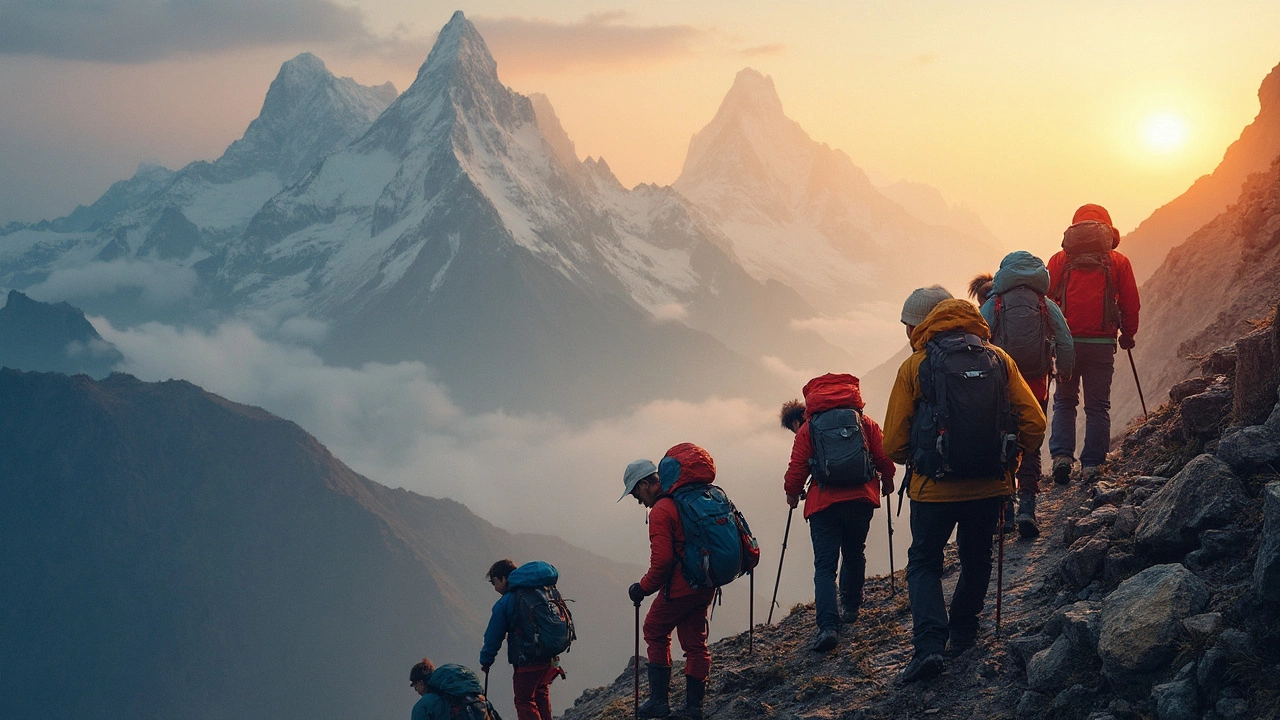SEARCH
Hiking Challenges – What to Expect and How to Conquer Them
Ever signed up for a trek and realized the trail was tougher than the brochure promised? You’re not alone. From sudden weather swaps to steep altitude gains, hikers face a mix of physical and mental hurdles. Knowing these challenges before you step onto the path can turn a dreaded day into a rewarding adventure.
The first thing most people overlook is the weather’s mood swings. One minute it’s sunny, the next you’re drenched in rain or battling icy winds. The key is to dress in layers you can add or peel off quickly. Our 3‑Layer Rule for Hiking breaks this down: a moisture‑wicking base, an insulating mid‑layer, and a protective shell. This system lets you stay dry and warm without carrying a bulky wardrobe.
Altitude is another beast. Even a modest climb above 2,500 meters can sap your energy and cause shortness of breath. The best antidote is a gradual ascent. Spend a day or two at a mid‑elevation camp, drink plenty of water, and keep your pace steady. If you feel headache or nausea, it’s a sign to pause and hydrate.
Navigation errors happen more often than you think, especially on less‑marked routes. A simple map and compass combo can save you from a costly GPS glitch. Learn basic compass bearings and always double‑check your position against recognizable landmarks. Even a short detour can add hours to your trek.
Fitness levels vary, and a trail that feels easy to a seasoned trekker can be brutal for a beginner. Build core strength and cardio stamina with hill walks, stair climbs, or indoor cycling a few weeks before your trip. Remember, it’s not just about legs – a strong back and shoulders make carrying a pack feel lighter.
Gear Essentials for Every Trek
Good gear is the difference between a smooth hike and an uncomfortable slog. Start with a backpack that fits your torso length; a wrong size can cause shoulder pain. Invest in a pair of breathable, waterproof hiking boots that break in before the trip – nothing ruins a day like blisters.
Don’t forget a lightweight, insulated sleeping bag even on summer treks; mountain nights can drop below 5°C. A compact emergency kit – including a whistle, multi‑tool, and a few band‑aids – gives you peace of mind. And always pack enough water; a reusable bottle with a built‑in filter works great on longer routes.
Best Indian Trails for Testing Your Skills
If you’re looking for a real challenge, India offers a spectrum of rugged paths. The Sandakphu trek in West Bengal pushes you to 3,636 meters with steep ascents and breathtaking Himalayan views. For a forest‑filled adventure, try the Valley of Flowers trek in Uttarakhand – it’s beautiful but demands solid navigation skills due to its remote location.
Closer to the south, the Kuari Pass trek in Uttarakhand blends moderate altitude with narrow ridgelines, perfect for honing your balance. The Hemis trek in Ladakh adds high‑altitude breathing challenges and occasional snow patches even in summer.
Each of these routes tests a different aspect of your preparation – whether it’s endurance, navigation, or weather handling. Pair your chosen trail with the 3‑Layer Rule, the right gear, and a solid fitness base, and you’ll be ready to tackle the toughest sections without panic.
Bottom line: hiking challenges aren’t obstacles, they’re opportunities to learn what your body and mind can do. Plan, pack smart, train smart, and you’ll turn every rugged mile into a story you’ll love retelling. Happy trekking!

India's Toughest Trek: The Goecha La Challenge
Goecha La is renowned as one of India's toughest treks, offering unparalleled physical and mental challenges amidst stunning natural vistas. From high-altitude ascents to unpredictable weather, the trek tests even seasoned hikers. Learn about the challenges faced, what preparations are essential, and why this trek is a bucket-list item for adventure seekers. Get crucial tips on overcoming obstacles and enjoying the breathtaking Sikkimese landscapes.
Continue reading